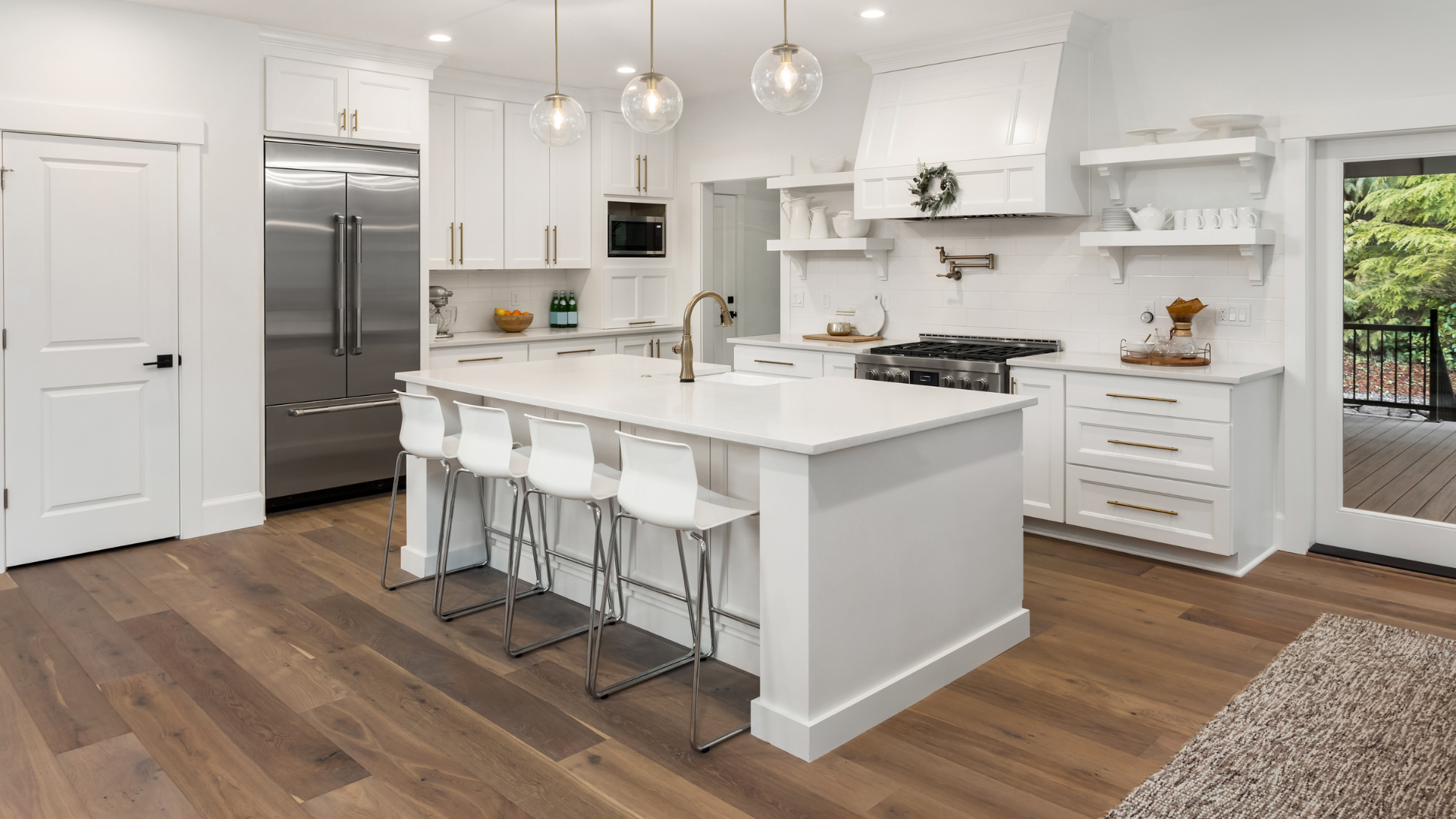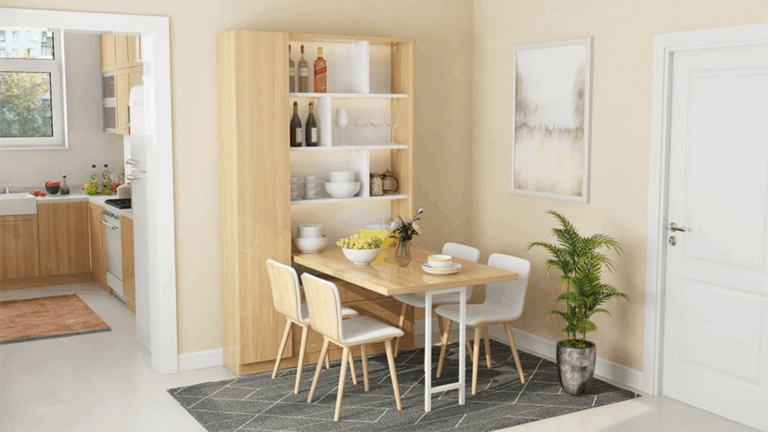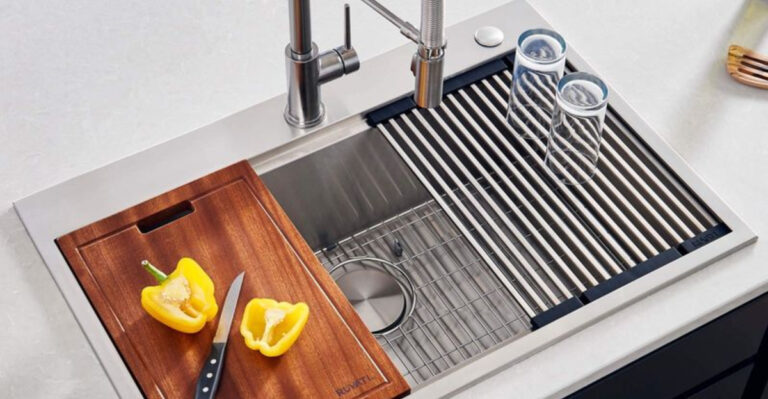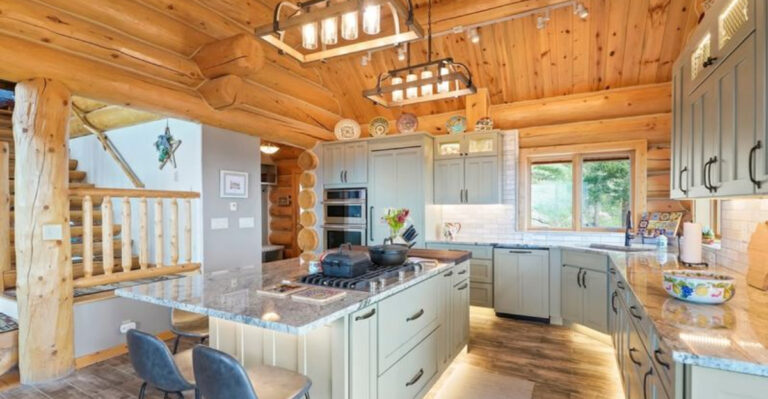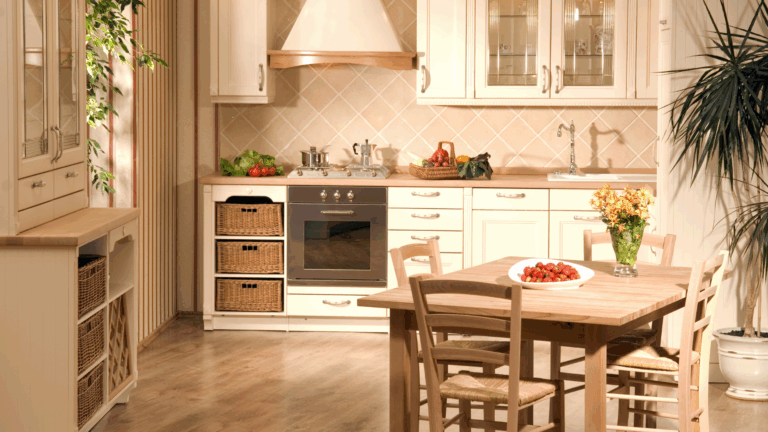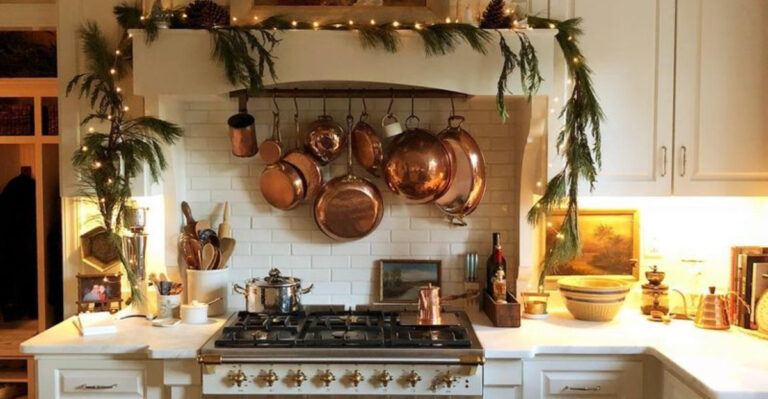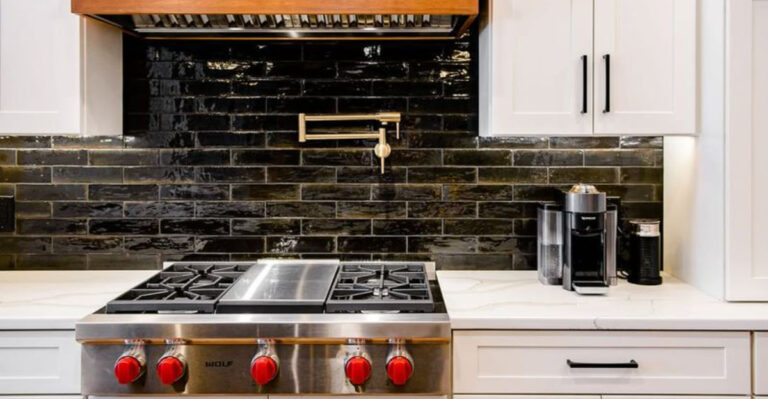15 Kitchen Flooring Trends To Consider In 2025 (Plus 5 Trends Experts Highly Recommend)
If you’re thinking about updating your kitchen floor, now’s the perfect time. Your kitchen is the heart of your home, and the right floor can make a big difference.
The kitchen flooring trends for 2025 offer a mix of style and practicality, with something for every taste and budget. Whether you’re considering a full renovation or just a small update, these trends can help you create a space that feels fresh and inviting.
From durable options to stylish finishes, there’s plenty to choose from to give your kitchen the update it deserves.
1. Sustainable Bamboo Floors
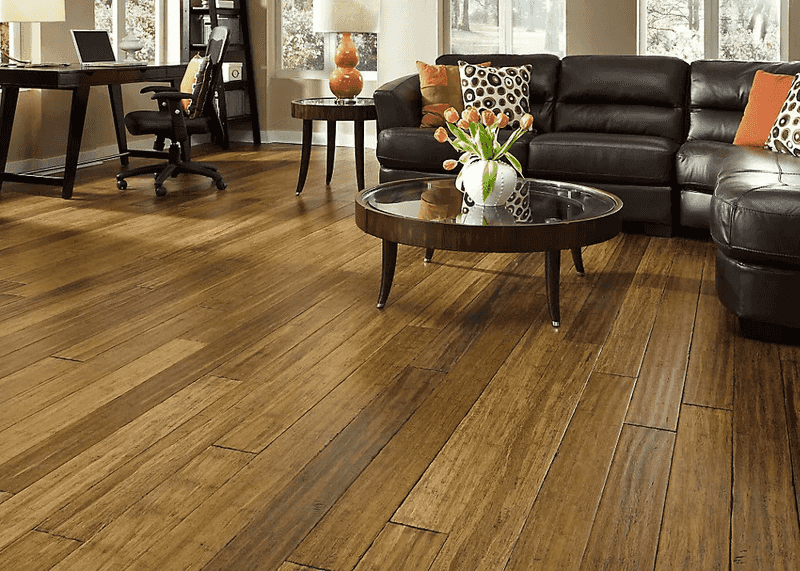
Bamboo flooring has taken the eco-conscious world by storm! This fast-growing grass reaches maturity in just 3-5 years, making it an incredibly renewable resource.
Homeowners love its natural light color that brightens kitchens while providing exceptional durability. Some varieties can even be harder than oak!
Bamboo floors resist water better than traditional hardwood, a major plus for kitchens where spills happen regularly.
2. Large-Format Porcelain Tiles
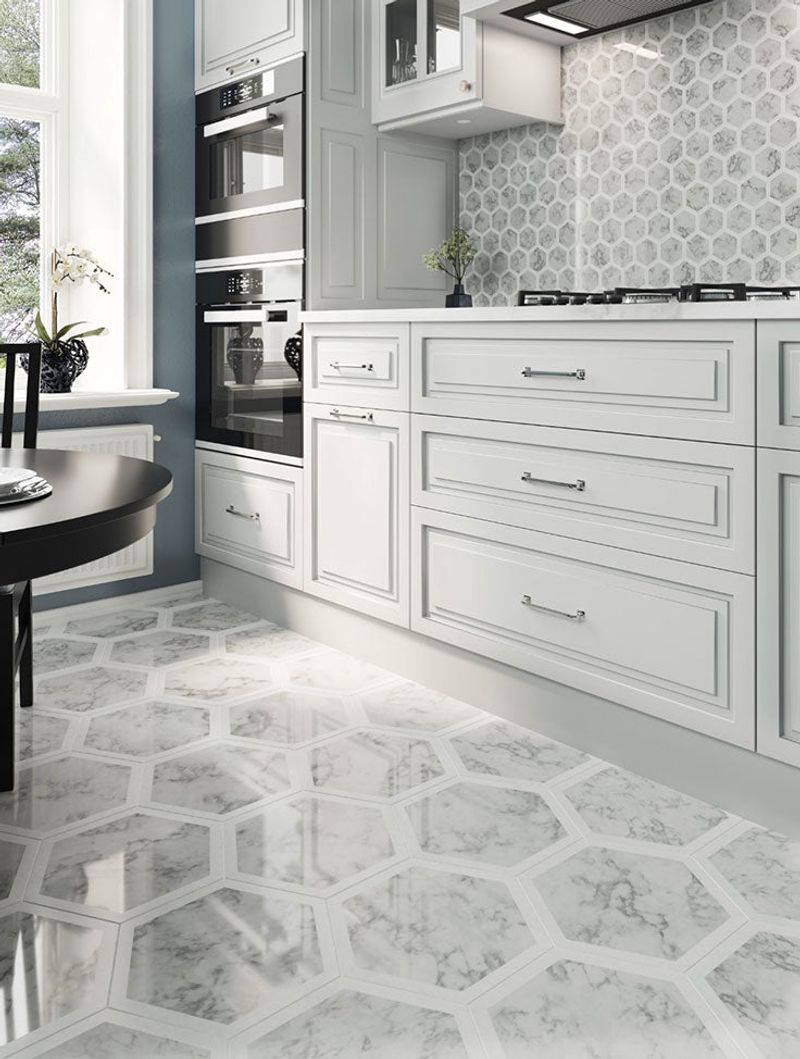
Gone are the days of tiny tiles with endless grout lines to clean! Large-format porcelain tiles create a seamless look that makes kitchens appear more spacious and open.
With fewer grout lines comes easier maintenance, a huge win for busy families. These oversized tiles now come in stunning patterns that mimic marble, concrete, or wood.
Installation requires professional expertise due to their size, but the dramatic effect is worth every penny.
3. Bold Geometric Patterns
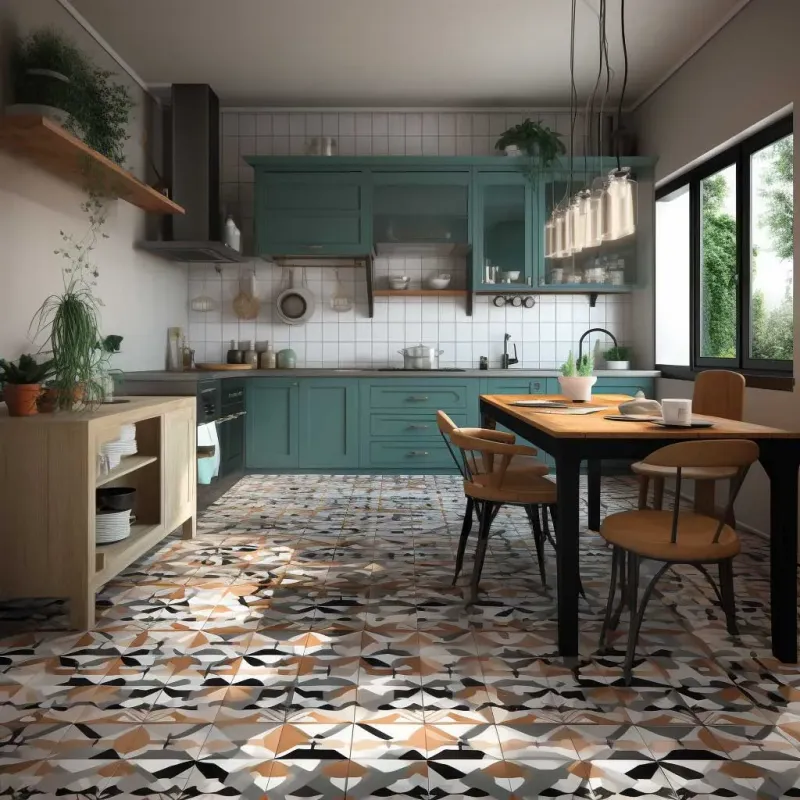
If vanilla isn’t your flavor, geometric patterned tiles might be your kitchen’s new best friend! These eye-catching floors feature sharp lines, angles, and sometimes wild color combinations that transform ordinary kitchens into artistic spaces.
Hexagons, diamonds, and intricate Moroccan-inspired patterns lead the pack. The best part? You can go subtle with neutral tones or make a statement with contrasting colors.
Many homeowners use these patterns as a “floor rug” effect in specific areas.
4. Textured Stone-Look Finishes
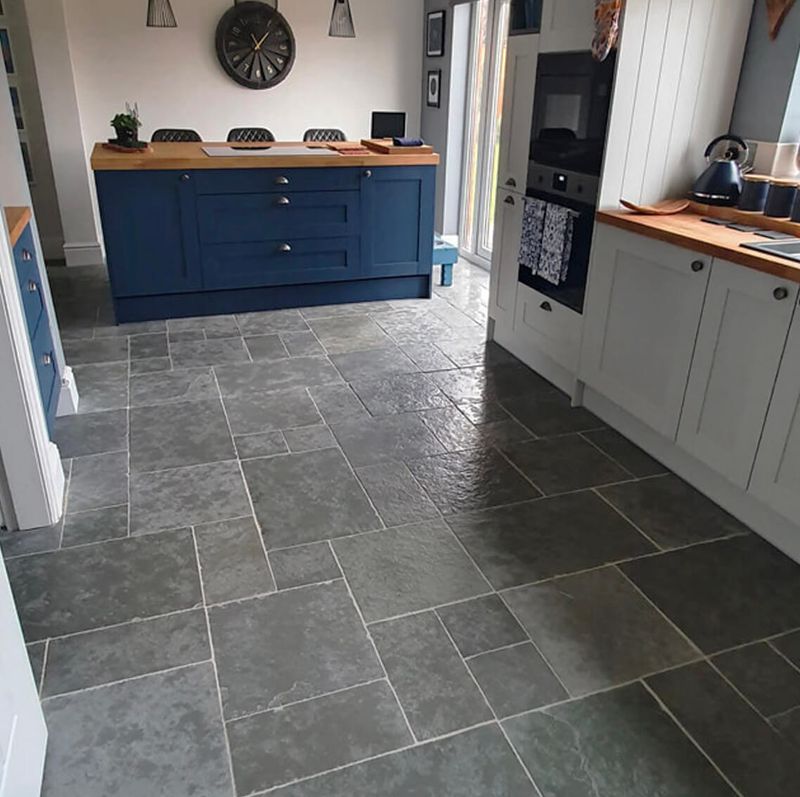
Smooth floors are taking a backseat to textured finishes that add depth and character! These stone-look surfaces feature subtle variations that mimic natural formations, providing better grip and hiding dirt between cleanings.
Manufacturers have mastered recreating slate, limestone, and travertine textures in materials that won’t break the bank.
What makes these floors special is their ability to look authentic while being much easier to maintain than real stone. Many options now include antimicrobial properties too.
5. Marble-Look Porcelain
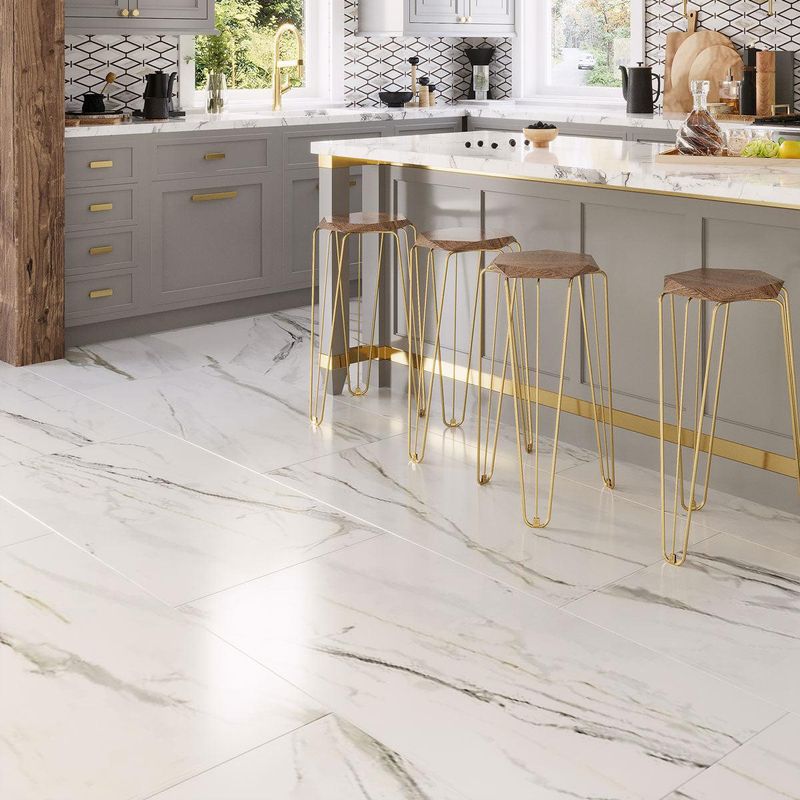
Marble kitchens without the marble problems? Yes please! Porcelain tiles that convincingly mimic Calacatta, Carrara, and other luxury marbles deliver high-end aesthetics without the maintenance headaches.
Advanced printing technology creates veining so realistic even experts do a double-take. Unlike real marble, these floors resist staining from tomato sauce, wine, and other kitchen culprits.
The cost savings are substantial too, often 70% less than genuine marble while lasting decades with proper care.
6. Herringbone Pattern Wood Floors
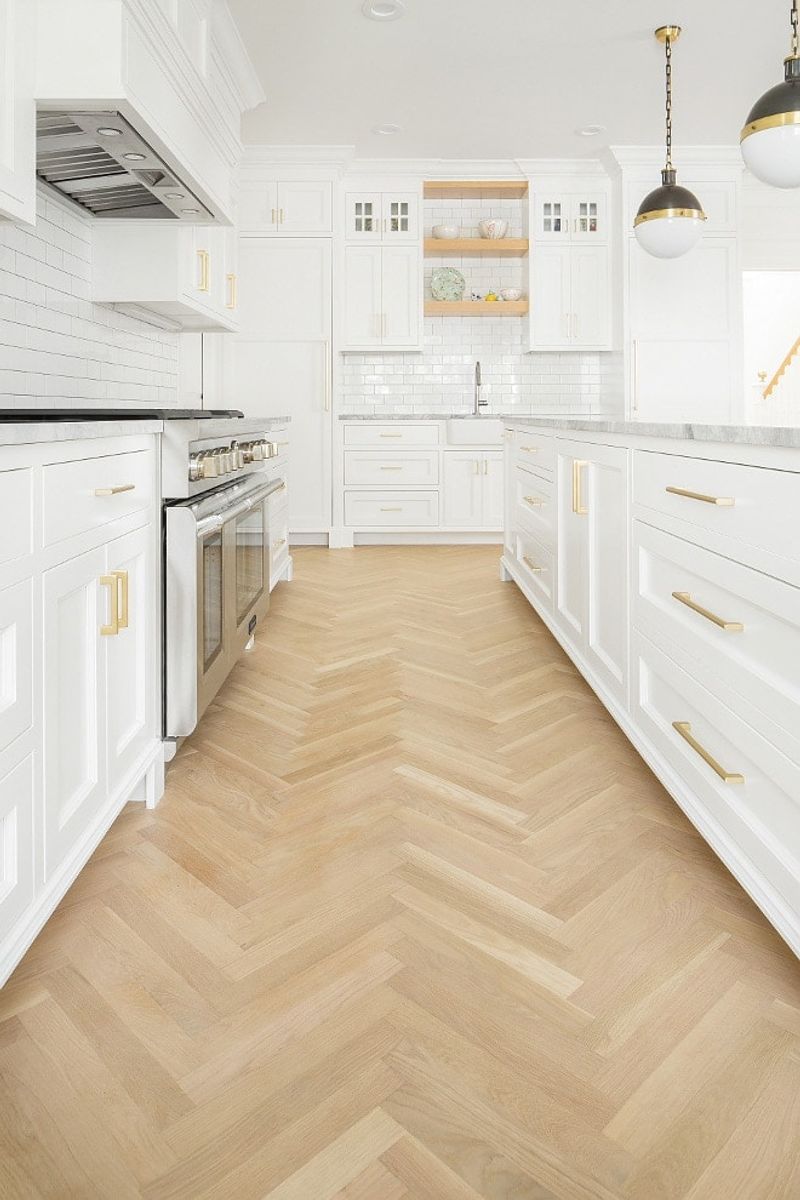
Though centuries old, herringbone patterns are having a major moment in 2025! This zigzag arrangement of rectangular wood pieces creates visual movement that draws the eye through the kitchen.
What’s new is the variety of materials offering this look, from actual hardwood to luxury vinyl and engineered options.
Lighter wood tones are especially popular, creating a bright, airy foundation that works with nearly any kitchen style. Installers report more requests for custom stain colors to match cabinetry perfectly.
7. Warm Honey Oak Comeback
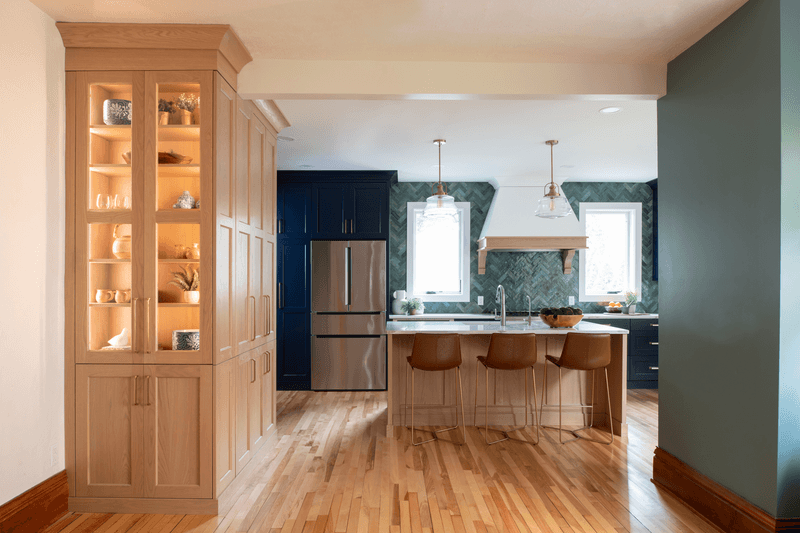
Everything old becomes new again! Honey oak flooring, once dismissed as dated, has returned triumphantly to kitchen design.
Today’s versions feature wider planks and more subtle grain patterns than their 90s predecessors. This warm, golden-toned wood creates an inviting atmosphere that complements both modern and traditional kitchens.
Designers are pairing it with contrasting cabinet colors like navy, sage green, or crisp white for a fresh take. Homeowners appreciate how these floors hide crumbs and pet hair between cleanings.
8. Water-Resistant Luxury Vinyl
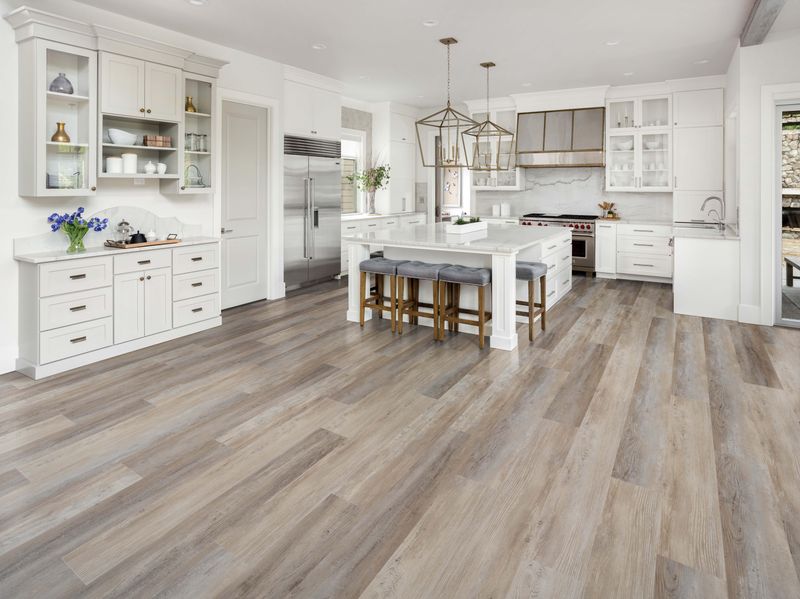
Imagine dropping a pot of pasta water without panicking about your floors! Water-resistant luxury vinyl planks (LVP) make this dream a reality for busy kitchens.
Unlike earlier vinyl floors, today’s premium versions feature realistic wood and stone looks with textured surfaces that feel authentic underfoot.
The technology has improved dramatically, with rigid cores that won’t warp even in high moisture environments. Many homeowners choose LVP for its comfort too, as it’s warmer and softer than tile.
9. Polished Concrete Floors
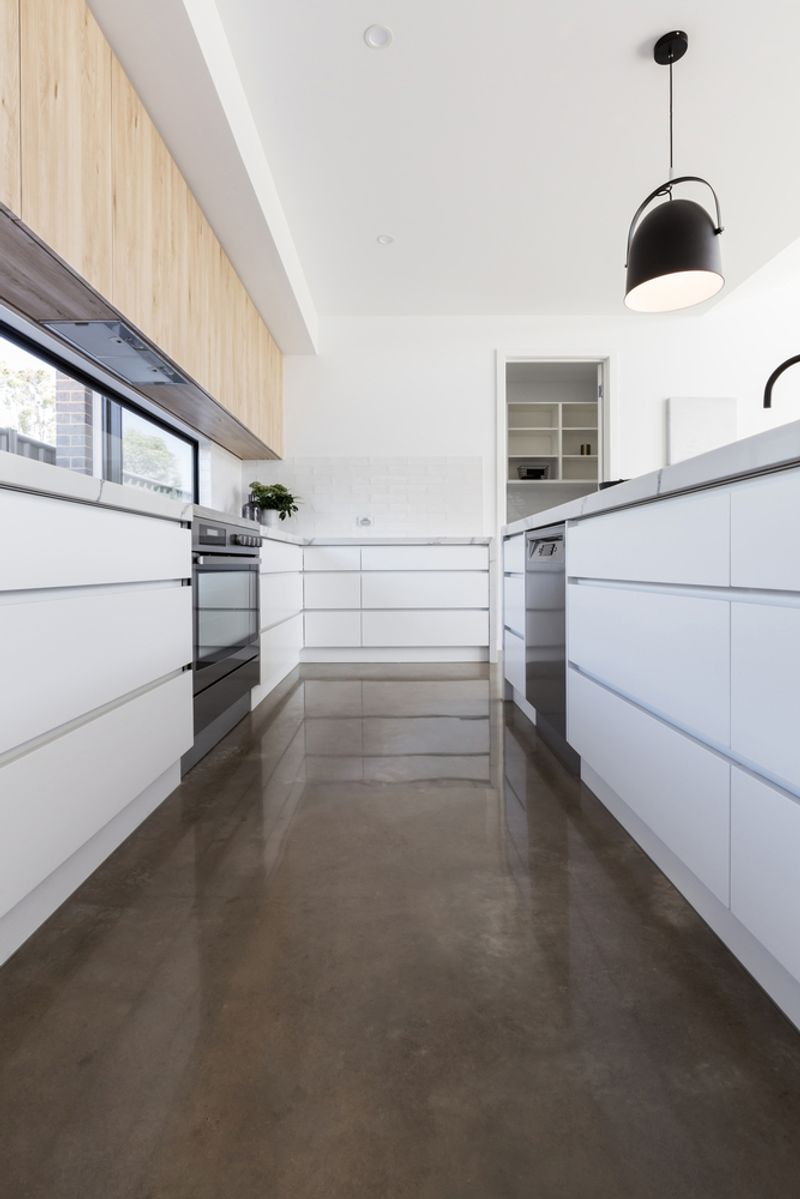
Industrial chic meets practical magic with polished concrete floors! Once found only in commercial spaces, these sleek surfaces now grace high-end residential kitchens with their minimalist appeal.
Advances in concrete technology allow for customized colors, aggregate exposure, and even embedded objects like glass chips for personalized designs.
The natural cooling properties make concrete floors a smart choice in warmer climates. Contrary to popular belief, properly sealed concrete isn’t cold or uncomfortable when paired with area rugs.
10. Classic Checkerboard Revival
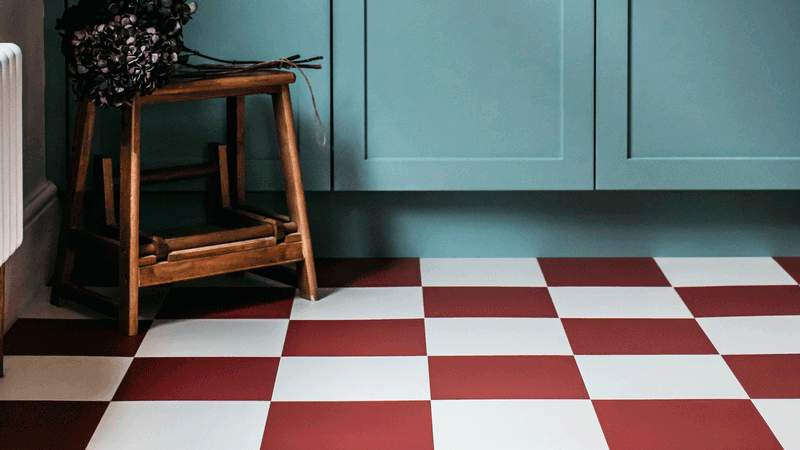
Checkerboard floors are jumping from retro diners into modern homes! This playful pattern adds instant character to kitchens of all sizes.
While black and white remains the classic combo, 2025 brings fresh pairings like navy/cream, green/beige, and even subtle tone-on-tone variations. Materials range from luxury vinyl tiles to porcelain and natural stone for different price points.
Designers recommend larger squares (12-24 inches) for contemporary spaces and smaller checks (4-8 inches) for vintage-inspired kitchens.
11. Character-Rich Reclaimed Wood
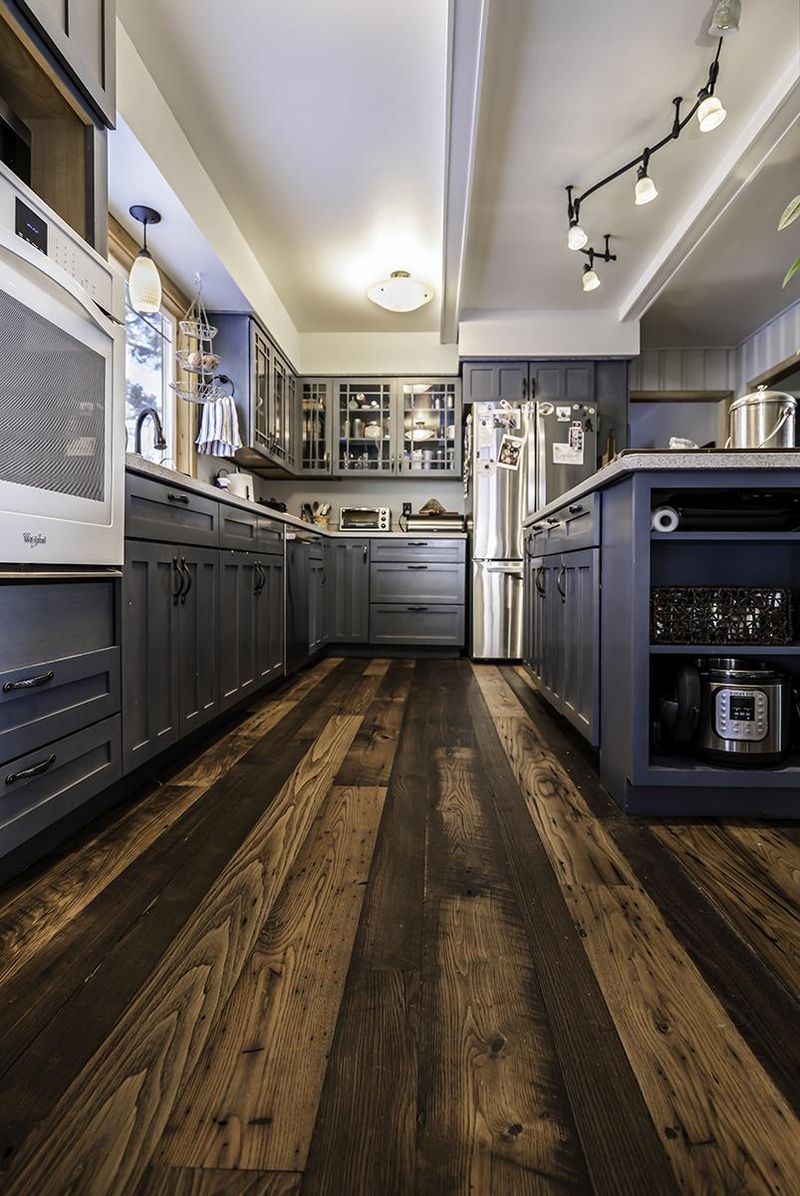
Stories live within reclaimed wood floors! Salvaged from old barns, factories, and warehouses, these planks bring history and character impossible to replicate in new materials.
Each board features unique nail holes, color variations, and wear patterns that create a one-of-a-kind kitchen foundation.
Environmental benefits abound too, as no new trees are harvested. Homeowners report these floors actually look better with age and use, developing a patina that enhances their authentic charm.
12. Terrazzo’s Colorful Return

Terrazzo floors are partying like it’s 1955 again! This composite material featuring chips of marble, quartz, glass, or other materials suspended in cement has made a spectacular comeback.
Modern terrazzo offers more color options than ever, with some homeowners choosing bold chip colors against contrasting backgrounds.
Installation has become more accessible with new pre-cast options and epoxy-based systems that can be applied over existing floors. Designers love terrazzo’s ability to tie together multiple colors from the kitchen’s palette.
13. Matte Finish Flooring
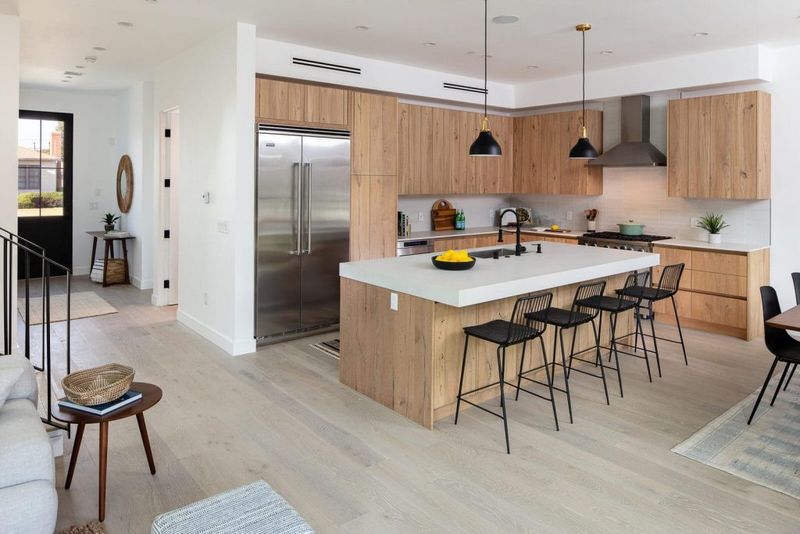
Glossy floors are taking a back seat to their sophisticated matte cousins! These low-sheen surfaces hide smudges, footprints, and minor scratches better than their shiny counterparts.
Available across materials from hardwood to porcelain and vinyl, matte finishes create a more relaxed, lived-in atmosphere.
Many homeowners appreciate how these floors photograph better without harsh reflections. Cleaning is simpler too, as water spots and dust don’t show as readily on these forgiving surfaces.
14. Mixed Material Transitions
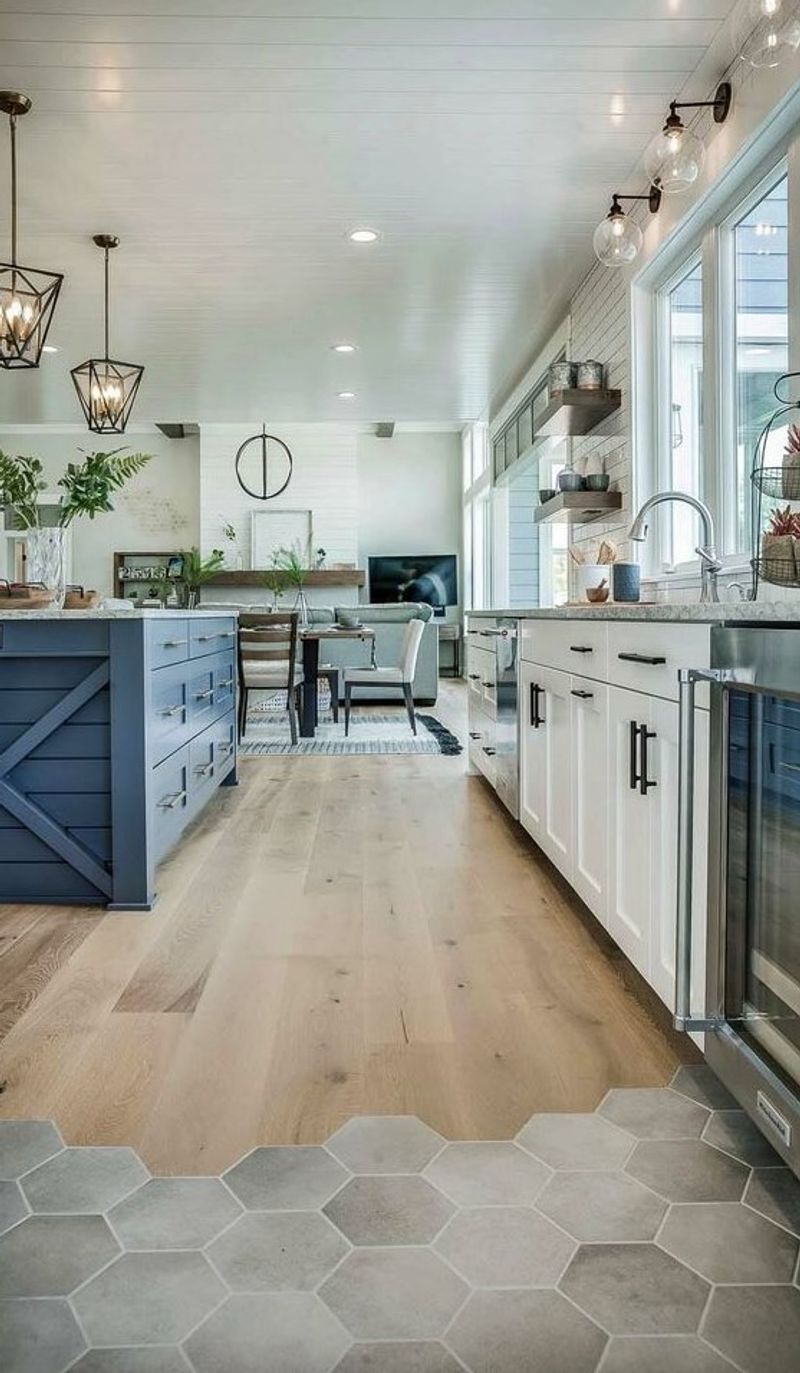
Why choose one floor when you can have two? Mixed material transitions create visual interest by combining different flooring types within the kitchen or between connecting spaces.
Popular combinations include hardwood meeting geometric tile at islands or defining cooking zones with practical porcelain. The trick lies in thoughtful transition points that feel intentional rather than arbitrary.
This approach lets homeowners place more durable, water-resistant materials in high-risk areas while using statement floors elsewhere.
15. Nature-Inspired Biophilic Floors
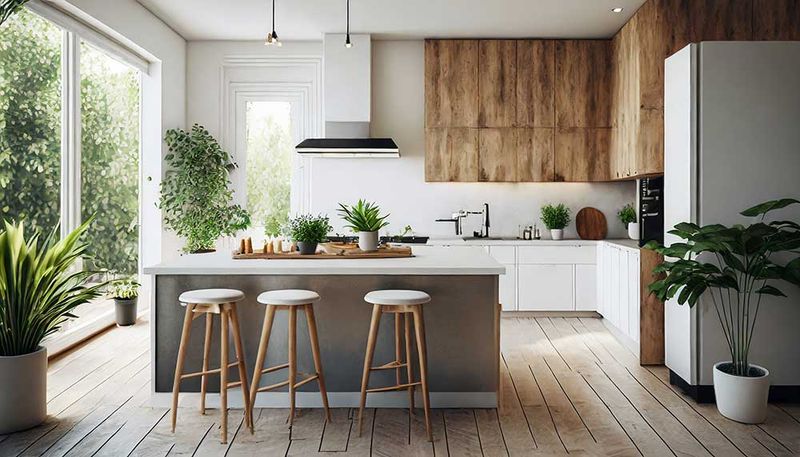
Bringing the outdoors in has never been more stylish! Biophilic flooring incorporates natural elements and patterns that strengthen our connection to nature.
These floors feature organic shapes, nature-inspired colors, and textures that mimic forest floors or riverbed stones. Some manufacturers even embed actual natural elements like leaves or small pebbles in resin-based floors.
Studies show these nature-connected designs reduce stress and increase feelings of wellbeing, making them perfect for the heart of the home.
16. Cork Flooring Resurgence
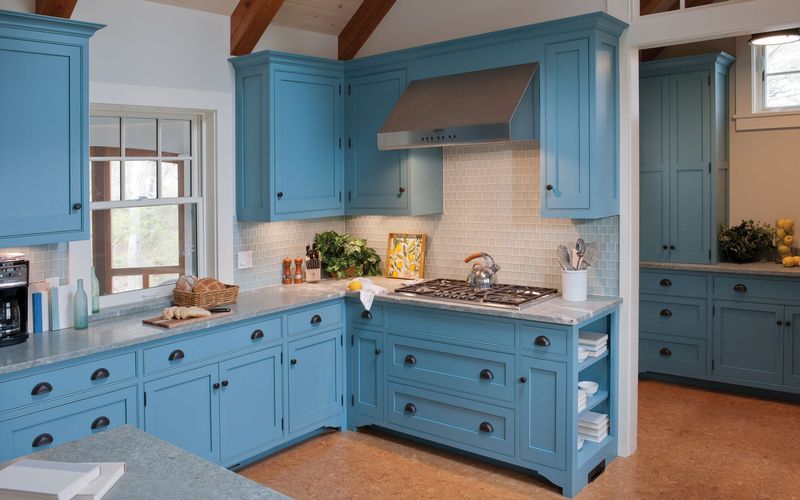
Standing in the kitchen for hours just got comfier! Cork flooring provides a naturally cushioned surface that reduces fatigue during marathon cooking sessions.
Beyond comfort, cork offers impressive environmental credentials as it’s harvested without harming trees. The material naturally resists mold, mildew, and even insects, making it surprisingly practical for kitchens.
Today’s cork comes in various colors and patterns beyond the traditional speckled look, including options that mimic wood grain or stone.
17. Heated Tile Systems
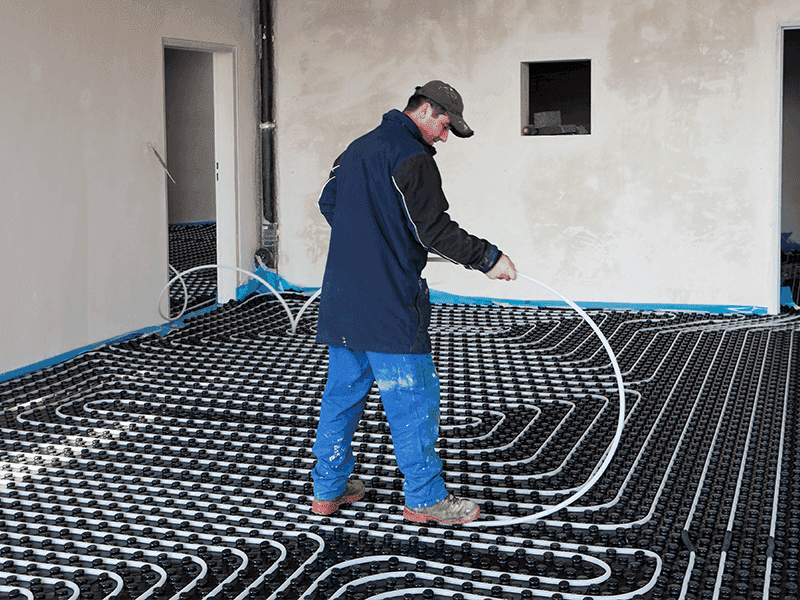
Cold feet in the kitchen are becoming a thing of the past! Radiant heating systems installed beneath tile floors transform chilly surfaces into cozy walking zones.
New thin-profile electric systems make installation possible even in renovation projects without raising floor heights significantly. Smart controls allow programming specific temperatures for different times of day, saving energy when the kitchen isn’t in use.
Many homeowners report these systems actually reduce overall heating costs by allowing lower thermostat settings throughout the house.
18. Super Durable Porcelain Slabs
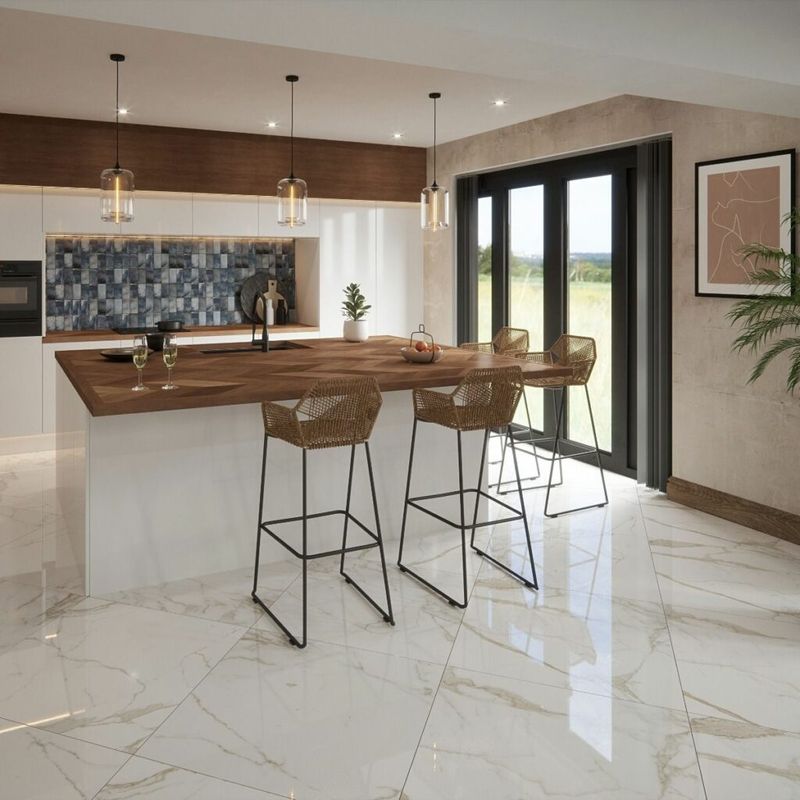
Move over traditional tiles, porcelain slabs are the new giants in town! These massive pieces (some as large as 5×10 feet) create nearly seamless floors with minimal grout lines.
Advanced manufacturing techniques have made these slabs incredibly strong yet thin, allowing for easier installation over existing floors in some cases.
The material resists scratches, stains, and impacts better than natural stone while requiring almost no maintenance. Some forward-thinking homeowners are even extending these slabs up walls for a continuous, dramatic effect.
19. Bleached White Oak Planks
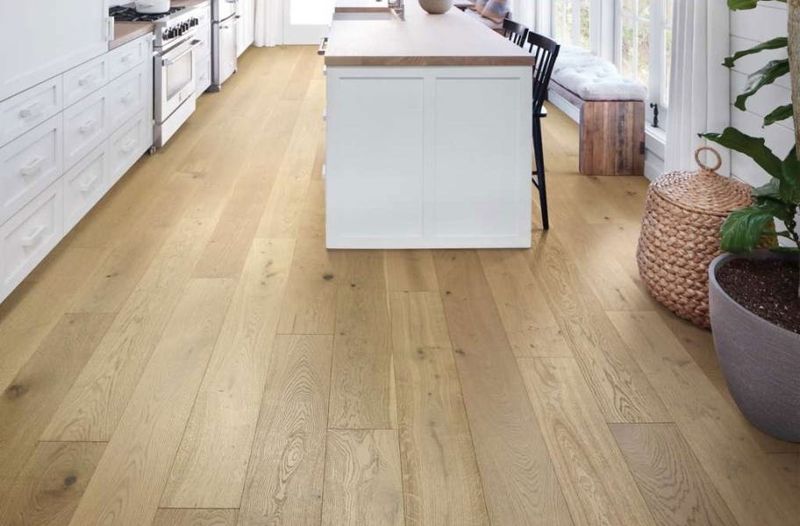
Light and bright is the motto for kitchens embracing bleached white oak floors! This treatment removes most of the wood’s natural yellow undertones, creating an airy, Scandinavian-inspired look.
Unlike stark white floors, bleached oak retains subtle grain patterns that add visual interest and hide everyday dirt. The light color reflects more natural light, making kitchens feel larger and more open.
Designers often pair these floors with colorful cabinetry since the neutral base complements virtually any color scheme.
20. Waterproof Engineered Hardwood
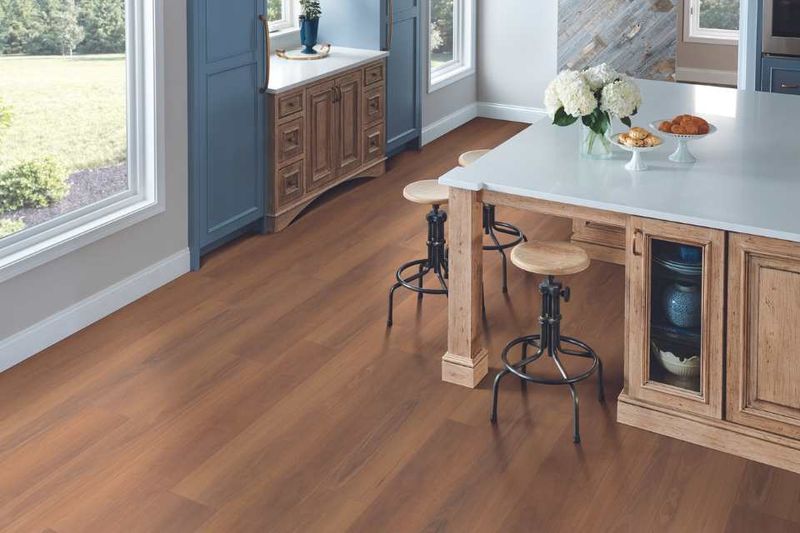
Who says you can’t have real wood in wet areas? Technological breakthroughs have created engineered hardwood with waterproof cores that stand up to kitchen spills and splashes.
These innovative products feature real wood veneers bonded to composite bases that won’t warp, swell, or buckle when exposed to moisture.
Many options come with scratch-resistant aluminum oxide finishes for double protection. Homeowners love getting the warm look of genuine wood without the traditional maintenance worries.

